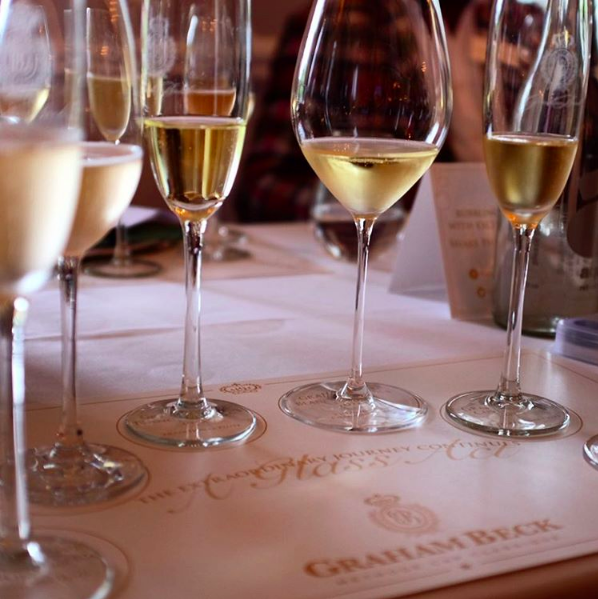A glass act
Is 2016 the year the world will remember as the death of the Champagne flute? If international (and local) trends have anything to say about it, they’re saying adieu to the cylindrical party favourite.
In its place comes more specific stemware, which better shows off the aroma and flavour of fizz. After all, bubbly is about more than just bubbles.
This point was neatly underscored by Mr Bubbles himself at a recent Graham Beck tasting. Pieter Ferreira has been putting the bubbles in the bottles of the aforementioned winery for around 27 years. The purpose of the tasting was to compare three Méthode Cap Classiques (MCCs) in two glasses each to give ‘each bubble the best chance to unlock its perfection in the perfect glass’.
Ferreira asks: “How does the carbonation and effervescence flow in, and how does it affect the flavour of MCC?”
To answer this question he went on a trip to Champagne and found not a flute in sight. He says this was a ‘wake up call’, and so he delved into the research of Champagne scientists Guillaume Polidori, Philippe Jeandet, and Gerard Liger-Belair to aid his quest.
Bubbles in a glass of MCC first act ‘to awaken the sight sense’: bubble trains as well as the pleasing cushion of foam on the surface. Then, the effervescence is a vehicle of flavour, as the ‘bursting CO2 bubbles propel the aroma of sparkling wine into the drinker’s nose and mouth’.

It’s all happening inside the glass. A direct link to both the visual and flavour impacts of MCC can therefore be attributed to the kind of stemware you serve it in.
The presentation was compelling. Here are some takeaways:
- Glass shape and size have great influence on how fluid flows and mixes in MCCs. The wrong shape glass can cause dead zones of bubbles, and therefore flavour.
- A glass with a single impact point produces a solitary stream of bubbles.
- Bubbles in sparkling wines do not spring into existence unaided, but require a starting point: these nucleation sites take the form of microscopic cellulose fibres (from the polishing cloth), or tiny ridges purposefully etched into the glass.
- The spherical shape of the glass, which also encourages vertical movement, respects the role of the mousse.
- The broader the glass is, the more light it receives—and the truer the MCC is to its actual colour.
When you next visit Graham Beck’s tasting room: Riedel Ouverture glasses will be used to taste the Graham Beck Brut NV; while the Riedel Veritas will be filled with the Graham Beck Blanc de Blancs; and the (delicious!) Graham Beck Cuvée Clive will be served in the Rolls Royce of glasses, the Lehmann Jamesse Prestige Grand.
Graham Beck isn’t alone in its mission to eliminate the flute. Many local MCC producers have joined in, and more and more Champagne-specific stemware are being introduced in tasting rooms across the winelands.
Le Lude in Franschhoek have also embraced this new glass notion: Winemaker Paul Gerber explains: “The advantage of the flute is mainly its aesthetics. There is very little aromatic improvement for the MCC when using one; and in fact some of the aroma can be lost.
“The longer the path of the bubble as it rises, the bigger the bubble. This increased bubble size has no positive impact and may in fact produce some negative characteristics.”
“At Le Lude’s tasting room we use a hybrid glass between the flute and tulip so that we try to accommodate both choices. For blending and prestige tastings we use the Lehmann Jamesse Prestige Grand too.”
Is it ironic to raise a toast to the flute as it departs the world of wine? Well, yes I suppose it is, especially when done with a Lehmann Jamesse Prestige Grand filled to the brim with South African MCC.
- Malu Lambert